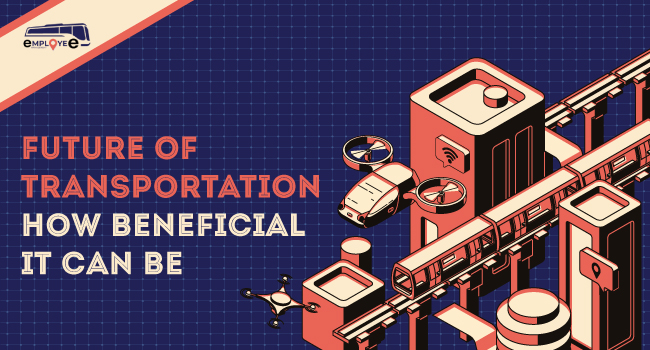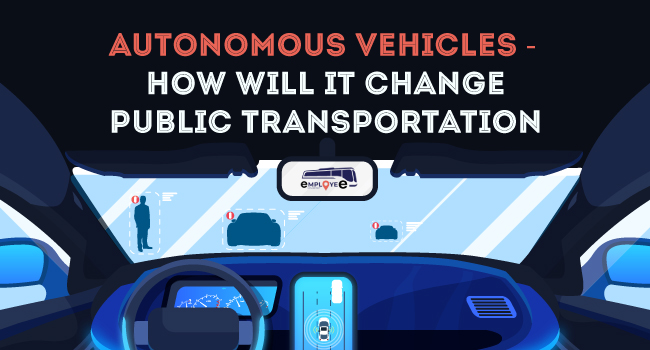A few years ago, people preferred traveling by their vehicles, but it is changing now. With technological advances in transportation services, the urban population prefers to commute using public transport rather than private, paving way to the future of transportation.
After surveying 50 metropolitan cities around the globe, McKinsey found that if all people living start using public transportation, the air will turn pure and it’ll save as much as $600 billion.
The more the world progresses, the more people are going to be inclined towards technology. Considering the current technological advancements, here is how the future of transportation will look like:
1. Autonomous Driving
Driving consumes a lot of time, which you rather enjoy relaxing or working on the last minute project. Apart from clearing some time from your schedule, driverless cars will ensure access to mobility, cheaper transportation, and also reduces accidents.
Autonomous vehicles will work on blockchain technology. So instead of you going to pick up your mother from the airport, you can send your car.
2. Shared Mobility
Using vehicles as the need arises is the future of the traditional carpooling system. It makes more sense to use the vehicles for a shorter time than buying it. Today, Uber is worth around $600 billion and owns not a single car.
Future of transportation aims to remove middlemen like Uber and connect car owners to clients so that they get the entire profit. Such technology is being developed right now using blockchain.
3. Electric Vehicles
We all know that Tesla makes electric cars, but they are costly. Still, more electric vehicles are sold now than in 2011. 450,000 electric vehicles were sold in 2015 as compared to only 50,000 sold in 2011.
According to Bloomberg New Energy Finance, electric battery prices are going to fall below $100 per kilowatt-hour in the next ten years. The product will be cost and performance effective and superior to fuel-based vehicles.
4. Public Transportation
The EuroRail has changed the global map. You sleep in a different country and wake up in another. It is only the beginning because after this technology combines with the Internet of Things, it is going to make public transportation even more flexible and convenient.
If you in developing countries like India, the public transport in urban cities like Mumbai and Kolkata are still growing with metro rails sprouting everywhere connecting the city centers with exterior areas.
The future of transportation will not only get smarter technology-wise but also become bigger accommodating more people and reliable too.
5. Internet of Things
Infrastructure and vehicles will be used to generate data, which governments and companies will use to analyze data and find efficient ways to reduce traffic. It is ideal for making long-term transit plans.
6. Infrastructure
As per population studies by the United Nations Population Division, the population is going to increase by two thirds in 2050. With such a vast community, it is going to be challenging to manage traffic on roads, because there’s only so much they can accommodate.
Public transit infrastructure needs to be upgraded starting now. Also, people should be motivated to use cycles for going to nearby places, which can double as exercise. Reforms should be taken where people who use cycles and public transport will get tax rebates.
7. Decentralization of Energy Systems
Over the years, the cost of renewable energy will fall while the awareness will increase, making it one of the most used energy systems across the globe in the next 15 years.
It will increase the use of electric vehicles and make electricity cheaper and cleaner. Most house owners will have their charging points for electric vehicles. The energy will be generated using solar panels on the top of their houses.
8. Regulation
On a national level, the government will introduce incentives and tax rebates for people using electric vehicles. It won’t remain an urban phenomenon but will take over all levels of the countries. The government will promote larger public goals including cleaner air for the cities and reduce traffic.
All these trends depend on one another, and a lack of one can result in the poor implementation of another.
For example, if shared mobility dominates because of reduced costs of using driverless vehicles as compared to fuel-based vehicles, the pollution levels will come down drastically.
At this point, the government should encourage people to try the new technology since most of them will be apprehensive about doing so, which is understandable.
How Will The Future of Transportation Improve the City Life
Reinforcing integrated mobility systems will improve the city life, which is considered as hectic and monotonous. One of the first things that will be positively affected is the environment.
With higher use of public transport, electric and autonomous vehicles, health problems like premature birth, respiratory disorders, and cardiovascular can be brought down as the air will be more transparent of pollutants that cause them.
The traffic congestion won’t be stopped immediately, but you can see developing cities like Mumbai, Delhi, and Istanbul are working towards it. For example, Mumbai, a city in India is building a dense network of metros to reduce traffic and has been successful in its phase one.
Conclusion
The more the world progresses, the more people are going to be inclined towards technology. With the help of our blog hope you could understand how the future of transportation will look like.



